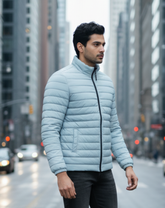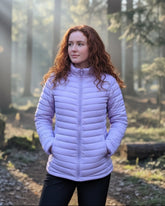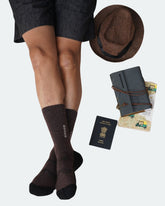Packing List for Yellowstone National Park Tour: Essentials for Touring and Traveling
Nestled in the rugged wilderness of the United States, Yellowstone National Park is not just a national treasure but a global marvel. Established in 1872, it holds the distinction of being the world’s first national park and continues to attract millions of visitors annually.
Spanning over 2.2 million acres across Wyoming, Montana, and Idaho, Yellowstone is a vast sanctuary renowned for its diverse wildlife, stunning geological phenomena, and unique ecosystems rarely seen elsewhere on the planet. Whether you're a nature enthusiast, adventure seeker, or simply seeking an unforgettable holiday, Yellowstone offers an escape into the extraordinary.
Basic Information
- Location: Wyoming, Montana, and Idaho
- Established: 1872
- Size: 2.2 million acres
- Annual Visitors: Approximately 4.5 million (2023)
- Visitor Centers: Albright (Mammoth), Canyon, Fishing Bridge, Grant Village, Old Faithful, with information stations at Madison, West Thumb, West Yellowstone, and Norris Geyser Basin
- Entrance Fees: $35 per vehicle, $20 per person, $30 per motorcycle or snowmobile
Physical Address
2 Officers Row
Yellowstone National Park
Headquarters Yellowstone National Park, WY 82190
Directions
Yellowstone National Park spans 3% in Montana and 1% in Idaho, featuring five entrance stations. During winter, most entrances are closed to regular vehicles. Plan your trip accordingly and check road conditions at your intended entrance before arrival.
Weather
Situated at an elevation of 6,000 feet (1829 m), Yellowstone experiences fluctuating temperatures and precipitation year-round. It's essential to be well-prepared for weather changes during your visit, including bringing plenty of layers and rain gear.
Average Temperatures by Season
- Spring and Fall: Daytime temperatures range from 30°F to 60°F (0°C to 16°C), with overnight lows between -5°C and -20°C. Snowfall averages around 12 inches (30.5 cm) in a 24-hour period.
- Summer: Daytime temperatures average around 70°F (21°C) and occasionally reach 80°F (27°C) at lower elevations. Nights are cooler, and higher elevations may experience freezing temperatures. Afternoon thunderstorms are common.
- Winter: Daytime temperatures range from -18°C to -7°C, with nighttime temperatures often below freezing, especially at higher elevations. Annual snowfall averages about 150 inches (381 cm), varying significantly across different areas of the park.
Temperatures can fluctuate dramatically within a single day in any season. Always check the weather forecast before your visit to plan accordingly and adjust your itinerary as needed. For up-to-date weather information, visit the National Weather Service.
Fees & Passes
The Yellowstone National Park offers a list of entrance fees, based on what type of vehicle you’re using, or in what kind of groups you’re traveling. If you’re planning on a family vacation, we suggest that you get yourself and your loved ones the Annual Park Pass, costing $70.00.
The park also offers special passes and free entry on certain days of the year. To find more details, check out the Yellowstone National Park website’s Fees & Passes section.
Entrances
There are a total of 5 entrances to Yellowstone National Park. These are the South, West, North, East and the North-East. We recommend always checking the Yellowstone website for any road blockages or closures before commencing your journey.
Internet & Cellular Access
Don’t expect wifi or cellular reception if you’re planning on camping. If you’re boarding one of the lodges, you’ll get a connection, but none of the campgrounds offer any, so come prepared, and inform your family and friends about your unavailability beforehand.
About Yellowstone
Here comes the good bit. The Yellowstone national park is a huge area. The park, in fact, sits atop a dormant volcano, the Yellowstone Caldera, also known as the Yellowstone Supervolcano. As a result, apart from being home to diverse wildlife, the park is also prone to various hydrothermal features, unlike any you’ll find anywhere else on the earth.
Spots to Visit
The rugged terrain of the place offers you numerous vantage points for sweeping views of the national park.
- Old Faithful, Upper Geyser Basin

Old Faithful, located in the Upper Geyser Basin, is inarguably the most famous site in the entire place. The geyser erupts around 20 times every day. Streaming hot water shoots up to 55 meters high. You don’t want to miss visiting Old Faithful by any chance. It’s the one reminder of the active volcano napping at your feet. The geyser eruptions are predicted, so if you’re planning to catch it, then be sure to check the forecasted times at the Visitor Education Centre.
The rest of the Upper Geyser Basin can be traveled on foot. The entire area is spotted with several other geysers that you can check out before or after you go for the Old Faithful eruption.
- The Hayden Valley

Located in the central area of Yellowstone Park, Hayden Valley is the first place for you to visit if you’re most excited about wildlife in the park. Driving through the enveloping greenness of the valley, you’re likely to come across a few elks, bison, and the occasional bear.
The Yellowstone river snakes off into the east of the roadway. If you’re one of the romantics, we highly suggest a beautiful sunrise or sunset on the Yellowstone’s waters from one of the several overlooks. At sunrise, you’ll find animals come to drink water at the river.
At the edge of the Hayden Valley, you’ll find the Mud Volcano. The area overall has numerous mud pots and fumaroles, most of which are rich in sulphuric acid that breaks the surrounding rock down into clay. The area is situated on a perched water system, so there’s very little water available; this adds to the extreme acidic nature as well.
- The Grand Prismatic

Yellowstone’s most emblematic and photographed wonder, the Grand Prismatic Spring is situated at the Midway Geyser Basin. It’s Yellowstone’s largest, with a diameter of 110 meters. Its bright colors are a marvel you don’t want to miss when you’re visiting.
The Midway Geyser Basin is also home to two smaller pools also bursting with vivid shades: the Turquoise Pool, the Opal Pool and the gigantic Excelsior Geyser Crater. We recommend that you take the boardwalk that takes you along all these features.
You can take the short walk to the Grand Prismatic Spring Overlook for a breathtaking aerial view of the Spring from a distance. We suggest that you combine this with your hike into the Fairy Falls, one of Yellowstone’s tallest waterfalls. It’s only a 8.5 kilometer round trip and takes about 2.5 hours to complete.
-
Grand Canyon of Yellowstone

The Grand Canyon of Yellowstone is testament to the park’s complex geological history. It formed from hydrothermally-altered volcanic rock and sediments. These result in the canyon’s characteristic shape and multi-hued colors.
You can explore the Canyon from various checkpoints in the north and south rims. Traveling along the north rim, you’ll come across the Grand View and the Canyon Lookout Point; and the Upper Falls View and the Artist Point along the south rim.
- The Waterfalls of Yellowstone

- The Norris Geyser Basin

The Norris Geyser Basin is located to the west of the Canyon Village. It is one of Yellowstone’s hottest hydrothermal geysers. The Norris Geyser Basin is also one of the most acidic. The Basin has two sections: the Porcelain Basin is treeless, and will definitely be an otherworldly experience for you, be it its sound, smell or color. The Back Basin with its geysers and hot springs, is the other basin in the Norris Geyser Basin area, set within a forest. The world’s tallest active geyser, the Steamboat Geyser, is located here. Its eruptions reach over 91 meters.
- Mammoth Hot Springs

There are two terrace boardwalks that take you to 50 hot springs. The Yellowstone National Park has the most remarkable troupe of geysers, hot springs and mud pots in the entire world, with over 10,000 hydrothermal features. There are countless other geysers sprawled across the map, some noteworthy ones being the Black Sand Basin, the West Thumb Geyser Basin, the Lower Geyser Basin, and the Biscuit Basin
- Lamar Valley

The most astounding element which you can’t leave unvisited at Yellowstone. The Lamar Valley, also known as the American Serengeti, is at the north-eastern corner. The lounging green landscape is home to populations of many animals. You can easily encounter the bison, grizzly bears, deer, pronghorns, and even the occasional wolf.
One of the most prized perspectives can be found from the fire lookout tower atop Mount Washburn, which stands at 10,243 feet (3,122 meters). Many regard it as having the best view in the park, encompassing a panorama that stretches from the Grand Canyon of the Yellowstone to the jagged, snow-capped peaks of Granite Peak in the Beartooth Mountains just beyond the park's boundaries. The most favored trail to the summit begins at Dunraven Pass on the Grand Loop Road.
Amanda Evans, the lead field educator at Yellowstone Forever, points out another exceptional viewpoint from Sepulcher Peak near Mammoth Hot Springs in the park’s northwest corner. She notes that the peak's name is derived from its resemblance to a body lying in a casket when viewed from afar.
What to Pack
ClothesAs mentioned earlier in our article, Yellowstone weather is as fickle as a cat’s mood. You don’t know what weather you’re going to face through the day. You might start with a sunny morning, and end up needing your waterproof jacket by the time you’re well out of doors. In addition to your warm clothes, bring a warm tent that can keep the heat inside, and some warm sleeping bags (as warm as they can get).
ThermalsIt doesn’t matter whether you’re visiting in summer or winter. Having these in your backpack is a must. Nights can get pretty cold, so keep a pair of long-sleeved thermal top and bottom-wear with you. You can also get yourselves a couple of thermal sets that come together.
Insulating Middle LayerMiddle layer clothing, also known as the insulating layer, is essential for regulating body temperature and retaining warmth in cold conditions. This layer traps heat generated by your body while allowing moisture to escape from the base layer. You can go for a fleece, depending upon which you find more comfortable.
Outer ShellDon’t trust the sun when you begin your hike. Moving up your itinerary you could find yourself under a chilling sundown. Always carry a good old solid waterproof winter coat with you. Get some that are lightweight and smart, so they’re perfect when you’re juggling the freezing temperatures at nightfall on the campgrounds with the most beautiful sunset pictures you don’t want to ruin.
For sunny mornings when temperatures are too hot for thermals, you can also carry a couple of organic cotton summer tees. It can get pretty warm in the daytime, so you might need a pair of summer shorts as well.
Equipment- Bug Repellants : Do NOT forget the mosquito repellants. You don’t want to miss the dreamy Faerie Falls and Mystic Falls, but you sure will without adequate bug measures.
- For Regular Walks/Trails : Buy yourself the most comfortable pair of tennis shoes for regular walks. If you’re going along one of the flat trails or boardwalks, or even planning to spend the day driving around in your car, these are the ideal choice.
- For Hiking : For your hikes, carry a lightweight hiking boot. Invest in the very best and most comfortable footwear. Yellowstone has to be traveled mainly on foot, whether you’re hiking or walking. So you want to take care of those feet, especially when you’re putting extra pressure on them.
- For Swims : If you want to go swimming in the natural lakes and rivers at Yellowstone, don’t forget to pack a pair of swimming shoes. The base of natural water bodies are often shallow enough to walk along, and also very rocky. Going swimming in natural pools without swim shoes might end up cutting and tearing up your foot, and essentially ruining your dream trip.
- Hiking Poles : If you’re not stable on your feet, especially when hiking and covering altitude, get some hiking poles for the extra support. Again, take care of the feet, they’re the foundations that are going to take you all around Nature’s beauty.
You might be up at a Hayden Valley overlook, but unable to actually properly see the wolves or bears in the inky gray early hours of dawn. The same goes for a camera. If you’re a photographer, even in the loosest sense of the word, or just want to keep these memories with you to look at, you will have to consider a high quality zoom lens that also offers great nighttime functionality.
Foldable BackpackCarry with you a lightweight and foldable backpack that will be easy for you to carry. This will greatly come in handy especially if you’re taking an all-day tour. You might need to shed layers or put them on various times throughout the day. Keeping a backpack at hand will ensure everything is quick and hassle-free. As usual, get one with zippers so you can stuff in extras as and when necessary.
Wrapping Up
Wrapping up your Yellowstone adventure plans, trust us when we promise that you’re in for a treat! From checking out cool geothermal features like Old Faithful and the vibrant Grand Prismatic Spring to spotting wildlife in the lush Lamar Valley, there’s something for everyone. Just repeating our heads up—pack for all kinds of weather. Think layers, comfy shoes for walking and hiking, and essentials like a good tent and bug spray. With the right gear and an adventurous spirit, you’re all set to soak up the stunning sights and experiences of Yellowstone. Get ready to make some incredible memories and get those binoculars!
Editor’s Picks
Packable Puffer Jacket For Men
- From ₹3,900.00
₹8,400.00- From ₹3,900.00
- Unit price
- / per
Men's Full Sleeves Thermal | Merino Wool + Bamboo
- ₹4,940.00
₹7,600.00- ₹4,940.00
- Unit price
- / per
Alaskan Parka Jacket For Women - Slim Fit
- ₹8,925.00
₹11,900.00- ₹8,925.00
- Unit price
- / per
Lightweight Packable Puffer Jacket For Women
- ₹6,300.00
₹8,400.00- ₹6,300.00
- Unit price
- / per
Men's Merino Wool Cushioned Technical Socks
- ₹1,074.00
₹1,790.00- ₹1,074.00
- Unit price
- / per













